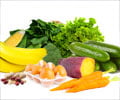The day is not very far when you'll be able to savour a strawberry-flavoured banana and a lemon flavored melon says a research team that includes an Indian-origin scientist.
Care for a strawberry-flavoured banana? Well, the day is not very far when you'll be able to savour one, courtesy the efforts of a research team, including an Indian-origin scientist, at the University of Texas Medical School at Houston.
They said that soon it would be possible to fine-tune enzymes responsible for flavours in fruits and vegetables.UT Medical School Assistant Professor C.S. Raman, Ph.D., and his colleagues report that they were able to manipulate flavour enzymes found in a popular plant model, Arabidopsis thaliana, by genetic means.
The enzymes, allene oxide synthase (AOS) and hydroperoxide lyase (HPL), produce jasmonate (responsible for the unique scent of jasmine flowers) and green leaf volatiles (GLV) respectively. GLVs confer characteristic aromas to fruits and vegetables.
Green leaf volatiles and jasmonates emitted by plants also serve to ward off predators.
"Mind you plants can't run away from bugs and other pests. They need to deal with them. One of the things they do is to release volatile substances into the air so as to attract predators of the bugs," Nature quoted senior author Raman, as saying.
"Genetic engineering/modification (GM) of green leaf volatile production holds significant potential towards formulating environmentally friendly pest-control strategies. It also has important implications for manipulating food flavour.
Advertisement
Raman said: "Our work shows how you can convert one enzyme to another and, more importantly, provides the needed information for modifying the GLV production in plants."
Advertisement
AOS and HPL are part of a super family of enzymes called cytochrome P450. P450 family enzymes are found in most bacteria and all known plants and animals.
Although AOS or HPL are not found in humans, there are related P450 family members that help metabolize nearly half of the pharmaceuticals currently in use.
In plants, AOS and HPL break down naturally-occurring, organic peroxides into GLV and jasmonate molecules.
"Each flavour has a different chemical profile," Raman said.
The study appears in an online publication of Nature on Aug. 20.
Source-ANI
SPH














